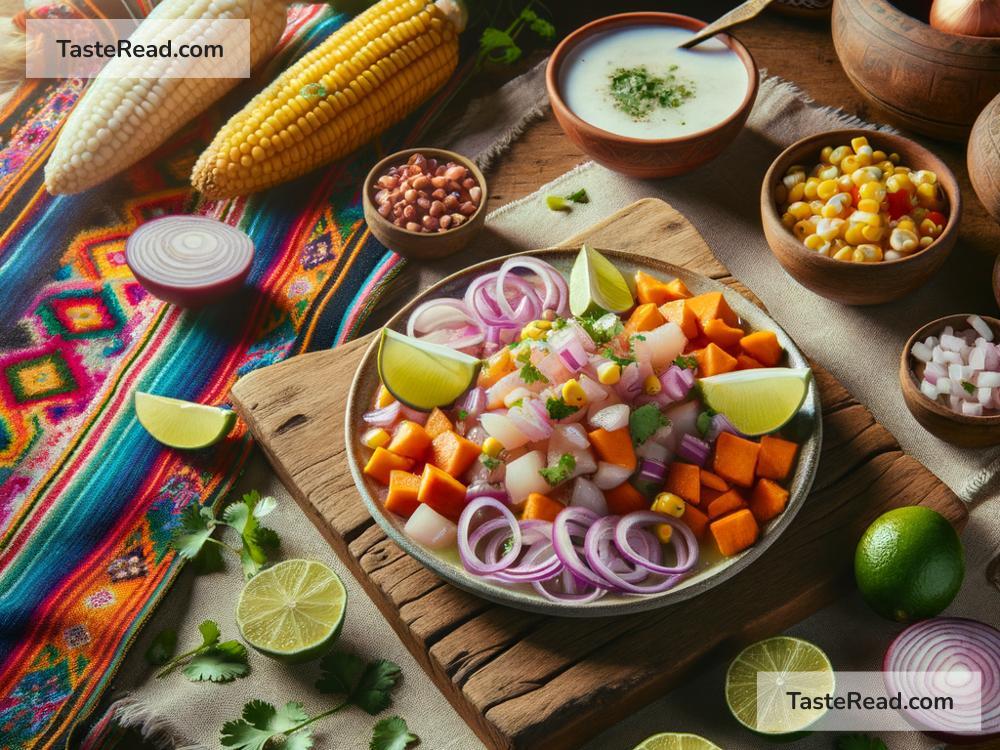Peruvian Ceviche: A Delicious Tradition
Peruvian ceviche is not just a dish; it’s a cultural treasure. Ask anyone in Peru about ceviche, and chances are they’ll smile and share strong opinions about how it should be made. This simple but flavorful plate is a true representation of Peruvian identity, blending fresh ingredients from land and sea with techniques that have been passed down through generations. In this blog, we’ll explore how Peruvians prepare ceviche, the customs around it, and why it has earned the title of Peru’s national dish.
What is Ceviche?
Ceviche (also spelled “cebiche”) is a dish made of raw fish, citrus juice (usually lime), and other fresh ingredients like onions, chili peppers, and cilantro. The citrus juice “cooks” the fish, creating a tender texture while preserving its fresh flavor. Each bite is tangy, spicy, and deeply satisfying.
While ceviche is popular across Latin America, Peru’s version is unique and adored worldwide. It’s simple, quick, and highlights the quality of the ingredients used.
The Heart of Peruvian Ceviche: Freshness First
The first custom of Peruvian ceviche is all about freshness. In coastal Peru, where ceviche originated, fish is caught early in the morning and immediately brought to markets. Many locals believe ceviche should be made within hours of buying the fish. This way, the fish maintains its firm texture and natural flavor.
Common fish used for Peruvian ceviche include sea bass, corvina, and sole. However, the type of fish can vary depending on what is available. Regardless of the type, freshness is non-negotiable.
Ingredients: Simple yet Perfect
Peruvian ceviche is famous for its simplicity. Locals say the dish doesn’t need fancy ingredients or elaborate preparation; the key is balance. Here’s what you’ll find in a classic Peruvian ceviche:
- Fish: Fresh white fish, cleaned and cut into bite-sized pieces.
- Lime Juice: Peru is home to small, sour limes packed with an intense flavor. These limes (called “limones”) are essential for marinating the fish.
- Red Onion: Thinly sliced red onions add crunch and a mild sweetness to the dish.
- Aji Amarillo or Rocoto Chili: Peruvians love their spicy chilies. Aji amarillo, known for its bright yellow color and fruity heat, is commonly used.
- Cilantro: Finely chopped cilantro brings freshness to the dish.
- Salt: A pinch of salt enhances all the flavors.
Some variations might include garlic for extra aroma or ginger for a subtle kick, but the traditional recipe sticks to these basics.
How Do Peruvians Prepare Ceviche?
The preparation of ceviche is quick—sometimes taking less than 15 minutes. It’s best to make it fresh right before serving, as leaving ceviche out for too long can affect the texture of the fish. Here’s how it’s traditionally made:
- Cut the Fish: The fish is sliced into uniform pieces so that it marinates evenly. In some households, this step is seen as an art, requiring precision and patience.
- Add Lime Juice: Peruvians squeeze fresh limes directly over the fish. No bottles of lime juice here—it must be freshly squeezed for the best flavor.
- Season with Salt: A small amount of salt is added to enhance the natural flavors of the fish and lime.
- Add Chili Peppers: Sliced aji amarillo or rocoto chili is added sparingly. The level of spice can be adjusted based on personal tolerance.
- Mix in Onions and Cilantro: Sliced onions and chopped cilantro are mixed in at the end to preserve their crunch and aroma.
It’s common for Peruvians to taste as they go. They adjust the lime, salt, and chili until the flavors are perfectly balanced.
The Custom of “Leche de Tigre”
One unique aspect of Peruvian ceviche is the juice left after marinating the fish. Locals call this liquid “leche de tigre” or “tiger’s milk.” It’s said to be bold, flavorful, and packed with nutrients. Some people drink it straight from the bowl, while others use it as a sauce for seafood dishes. Peruvians also believe leche de tigre has energizing properties and even works as a hangover cure!
Traditional Side Dishes
In Peru, ceviche is rarely served alone. It comes with a variety of side dishes that balance the flavors and provide additional textures. The most common accompaniments are:
- Sweet Potato: Boiled or steamed sweet potato offers a touch of sweetness that contrasts beautifully with the tangy ceviche.
- Corn: Peruvian corn, known for its large kernels, adds a soft, starchy texture to the plate.
- Lettuce: Crisp lettuce leaves are often used for presentation and extra crunch.
- Plantain Chips: Fried plantain chips are a modern addition but are becoming increasingly popular.
Eating Ceviche: A Social Affair
In Peru, ceviche isn’t just food—it’s often the centerpiece of family gatherings or celebrations. Friends and families prepare it together, sharing stories and laughter while chopping fish and squeezing limes. The dish is usually eaten during the day, especially at lunchtime. Most locals believe eating ceviche at night is taboo because it’s best enjoyed fresh, when the fish is at its peak.
During festivals like National Ceviche Day, celebrated every June 28th, people across Peru come together to honor their beloved dish. Restaurants feature it on special menus, and locals share their favorite recipes.
Final Thoughts
Peruvian ceviche is more than a recipe—it’s a reflection of the country’s rich culture and love for fresh, natural ingredients. Its simplicity allows the vibrant flavors to shine, making it a favorite not only in Peru but across the world.
So next time you’re in Peru, don’t miss the chance to taste authentic ceviche. If you can’t make it there, try preparing it at home following the customs mentioned above. Fresh fish, lime, chili, and a little love—that’s all you need to enjoy this Peruvian masterpiece!


